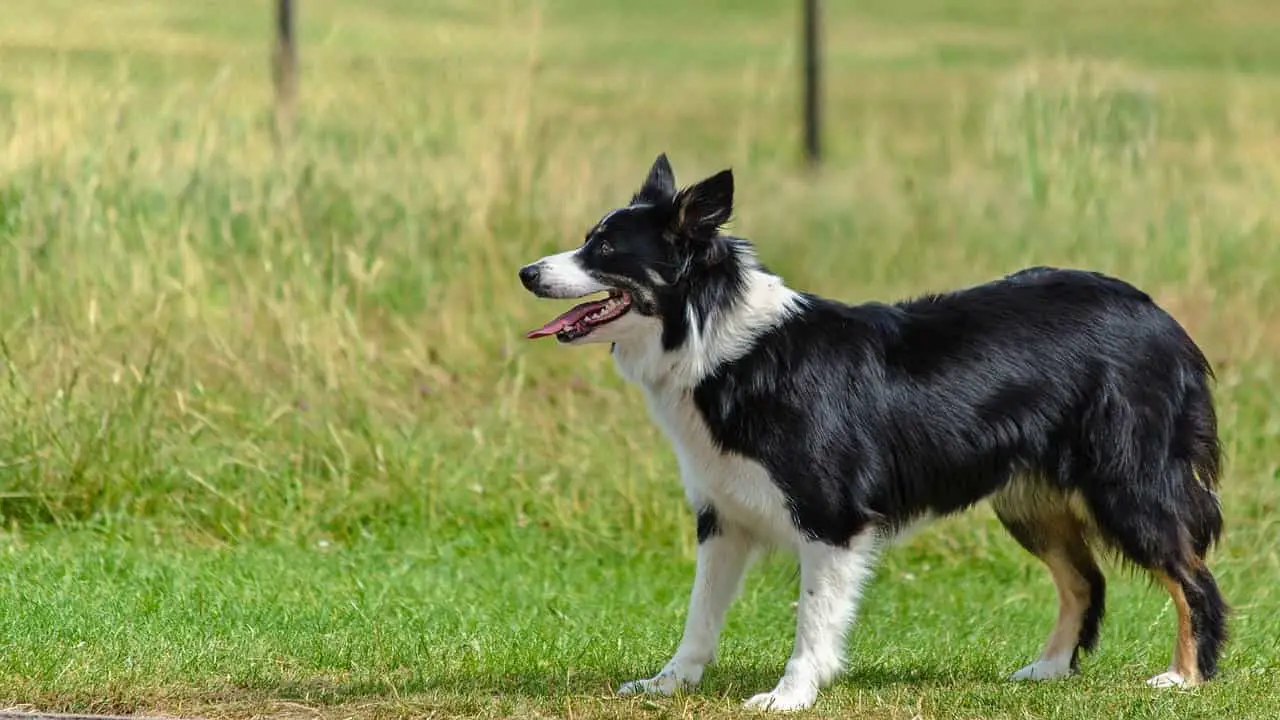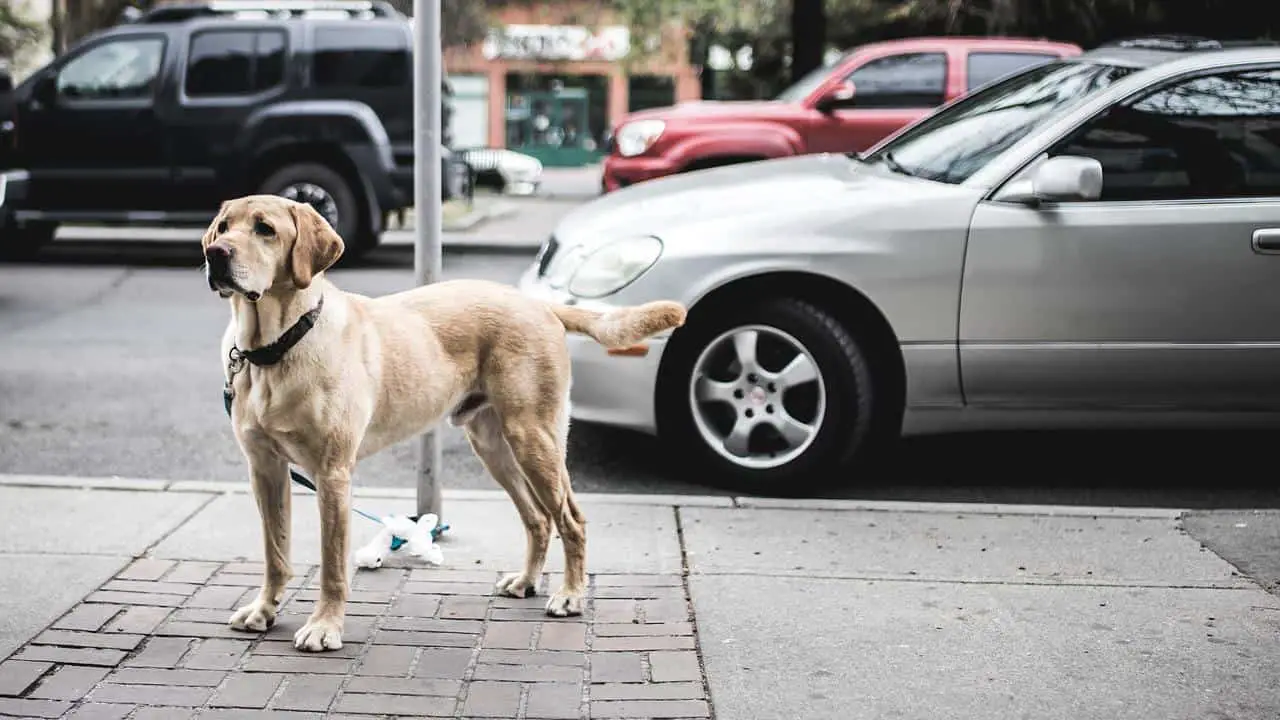Any size or breed of dog can suffer from hip dysplasia. This is a type of condition that frightens large as well as giant breed dog owners. Hip dysplasia can severely impact a dog’s life and is difficult for owners to witness. Thankfully, taking care of your dog responsibly and educating yourself about this condition can help maintain your dog’s health.
What Is Hip Dysplasia in Dogs?

Hip dysplasia occurs as the dog grows. It is the result of hip joints loosening on its socket that ultimately brings pain and dysfunction to the affected dog. As the canine grows, their hip’s bone and cartilage gets worn out. Eventually, it causes muscle atrophy, arthritis and limited mobility.
Simply speaking, hip dysplasia is a skeletal condition. Oftentimes, it affects large dog breeds. Although there are small breeds that could be affected as well.
Hip dysplasia in dogs can lead to serious health conditions. This is according to the studies performed by the American College of Veterinary Surgeons. Dogs with this condition that constantly move could suffer from permanent joint damage. Eventually, it can result to serious consequences.
When a dog has hip dysplasia, the ball and socket are unable to fit together correctly.
This results in constant friction against the two rather than sliding smoothly. In the long run, it causes joint deterioration and eventual loss of function.
Is Hip Dysplasia The Same For Puppies?

If you have Border Collie puppies, this can be the least of your problems. Hip dysplasia isn’t present at this stage. On the other hand, laxity in your dog’s exercise and diet is believed to be detrimental. Sooner or later, your beloved dog might suffer from looseness in their joints.
This is then followed up by Osteoarthritis or Degenerative Joint Disease. Basically, this is the body’s way of the dog in trying to stabilize the affected hip joint.
What Are The Signs & Symptoms of Hip Dysplasia in Dogs?
Despite the fact that this health condition could be undetected at times, there are signs you may watch out like:
- Problem in standing
- Abnormal sitting position
- Popping and cracking sounds from the joints
- Occasional or chronic lameness
- Limping without prior injury or trauma
- Bunny hopping, especially when running
- Having problems when going upstairs, getting into cars or getting on and off furniture
On top of what mentioned, there are other ways you can watch out for. Through this, it can give you a sense of whether your Border Collie is suffering from hip dysplasia or not.

Hind end lameness – any dog with hip dysplasia may experience hind end lameness. The back end of the dog’s body becomes harder to move. Also, it may freeze up or become uncontrollable at times. A dog suffering from hip dysplasia may not experience hind end lameness until a later stage of disease. If your dog is displaying this symptom, it has probably been exhibiting early symptoms of the condition for some time. Although there are not many other diseases associated with hind end lameness, you should still have your dog examined by a veterinarian just to be safe.
Loss of muscle in the thigh – as the hip dysplasia condition advances, dogs will have a much harder time doing things it used to like jumping and running. This will cause the muscles in their thighs to atrophy. If hip concerns are not treated, the loss of muscle mass will become apparent. There are few other conditions that are connected with this symptom. If you see it in your dog, you have probably witnessed some of the other symptoms before the muscle atrophy stage.
Lethargy – dogs with hip dysplasia often become lethargic. This is because of the pain associated with standing up and moving around. It makes them have less interest in doing various things than they used to. On the other hand, bear in mind that lethargy can also be attributed to other health conditions. So don’t be quick to jump to conclusions.
Unusual gait – It is possible that your canine has hip dysplasia if it takes an unusual or strange gait. Some individuals call it as “bunny hop”. It’s because it has a strong resemblance to the way a rabbit hops as it walks.
Difficulty moving – a dog struggling to move may be a sign of hip dysplasia. Dogs with this condition usually have difficulty getting up. This is often a problem among dogs that want to run, jump or climb the stairs. But mind you, limited mobility can be a sign of arthritis in dogs as well. It might be connected to Lyme disease and several health conditions. So if you notice your dog going through such a predicament, have them checked by a vet.
What Are The Causes of Hip Dysplasia in Dogs?
Hip dysplasia in dogs is caused by a combination of factors, starting with genetics. Border Collies, in particular, are prone to it due to their genetic heritage. Other probable causes include rapid growth, improper weight, and imbalance in nutrition.
From what we’ve learned, hip dysplasia among Border Collies is inherited. It’s the same reason why there are no medications available to prevent it. On the other hand, its progression or manifestation can be slowed down by giving dogs a proper diet and the right amount of exercise.
Are There Breeds More Prone To Hip Dysplasia?

It’s a given that many large dogs develop hip dysplasia. Some breeds that are prone to this condition include but not limited to:
- Great Dane
- Saint Bernard
- Labrador Retriever
- German Shepherd
If you’ve owned several large dogs like the ones mentioned, you may have wondered why this condition affects them. And of course, how you might prevent it?
How To Diagnose Hip Dysplasia in Dogs?
The main objective of having your dog checked for hip dysplasia is to identify whether there’s a hip joint laxity. At the same time, the diagnostic is used as a chance to evaluate the status of degenerative joint disease.
A surefire way of diagnosing hip dysplasia is by performing a hip radiograph. In this process, general anesthetic will be used. It’s to ensure that your dog will not feel any pain. Any pet that is suspected to have such a condition must go through x-ray ASAP.
How To Treat Hip Dysplasia in Dogs?
It is possible to control the symptoms of hip dysplasia in your Border Collie and other dogs. Among the ways to do this is through the following:
- Using medication
- Giving dog supplements
- Trying alternative therapies
These treatments are otherwise known as conservative treatment. They are usually recommended for older dogs or those who are not suitable for surgery. Patients like this may also take advantage of physical rehabilitation. The process can help address pain and other symptoms while enhancing mobility.
The pet’s clinical signs and level of distress are used in determining the best treatment to provide.
There are non-steroidal anti-inflammatory medications with little side effects. Not to mention, proven effective for years. Before identifying the most effective medication, numerous medications may be tested.
Majority of the dogs that have hip dysplasia ought to be seen by a veterinarian. These professionals are the only people qualified to prescribe chondroitin sulfate, glucosamine as well as omega 3 fatty acids.
Are There Alternative Medicine Options for Hip Dysplasia in Dogs?
There is hope for dogs with hip dysplasia. Fortunately, the condition can be treated naturally! Your dog will feel more comfortable. They might even regain some of the mobility they may have lost. You can see some wonderful results by using certain techniques consistently like the ones below:
- Controlling weight
- Physical therapy
- Hydrotherapy
- Modifying diet
- Natural supplements
- Special mattresses
- Acupuncture
What Is the Cost of Surgery of Hip Dysplasia in Dogs?

Surgery has better chances of eliminating pain. Sadly, medical maintenance might not be enough to provide a more comfortable life to your dog. Besides, surgery may reduce not only the risk, but also the cost of lifelong medicines. Sooner or later, it may prove to be the cheaper option.
As for the surgery cost, there’s no fixed amount for it. It varies on numerous elements like:
- Type of procedure
- Location where the surgery will be performed
- The age, breed, size and any preexisting conditions of the dog
- Clinical setting where the procedure will be done (private practice, academic, non-profit, government facility)
As an example, there are insurance claims reported before for hip surgery among dogs. The figures were ranging from $1200 to $7500.
How To Prevent Hip Dysplasia in Dogs?
It is impossible to prevent all cases of hip dysplasia. However, you may reduce your dog’s risk of developing the condition by taking certain actions. When your dog is young, you should strive to maintain a healthy skeletal system.
Your puppy should be fed an appropriate diet. This will serve as a foundation for them to have healthy bone and joint development. At the same time, it prevents excessive growth that leads to the condition.
Perhaps, this is your first time getting a Border Collie or any large dog for that matter. You can already spare yourself from owning a dog with this condition if you’ll be careful. How you can do it if you may ask? Follow the tips below:
- Select a breeder who is catering to the dog’s hip health that they’re breeding
- Do not over exercise your puppies
- Make sure that you give your dog joint supplements for a healthy development
- Steer clear of neutering young dogs
- Have them tested for hip dysplasia at a young age
Is Hip Dysplasia in Dogs Fatal If Left Untreated?
If this condition is taken for granted, it can soon escalate to osteoarthritis in their hip. The abnormal movement is wearing down the cartilage. If this continues, it will trigger scar tissue formation and bone spurs.
In the process, it will be difficult for your dog to walk. Thus, have less interest in joining activities that are supposed to keep them healthy. Next thing you know, they are queuing for surgery to get relief from their predicament.
Hip Dysplasia is not fatal by itself but it can lead to more serious conditions, especially if treatment is mishandled.
Conclusion
A common misconception among dog owners about hip dysplasia is that it only affects large dog breeds.
Whereas in reality, any size and breed can suffer from it. This should alarm dog owners in taking the appropriate steps to ensure their dogs are safe from the said condition. It could be done by having their Border Collies checked by a trusted vet, watch out for signs of the condition and also, talking to a reputable breeder before deciding to get one.


